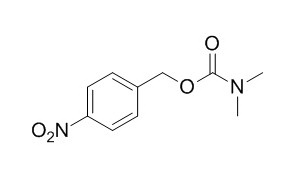Carbamic acid
Carbamic acid with minimum inhibitory concentration (MIC, 5 mg/L) and minimum fungicidal concentration (MFC, 10 mg/L) were against the growth of P. litchi for 2 and 4 days, respectively.
Carbamic acid treatment reduced the disease incidence and browning index of litchi fruits, maintained the fruits quality and, thus, it could be an effective postharvest handling to extend the shelf life of litchi fruits during storage.
Inquire / Order:
manager@chemfaces.com
Technical Inquiries:
service@chemfaces.com
Tel:
+86-27-84237783
Fax:
+86-27-84254680
Address:
1 Building, No. 83, CheCheng Rd., Wuhan Economic and Technological Development Zone, Wuhan, Hubei 430056, PRC
Providing storage is as stated on the product vial and the vial is kept tightly sealed, the product can be stored for up to
24 months(2-8C).
Wherever possible, you should prepare and use solutions on the same day. However, if you need to make up stock solutions in advance, we recommend that you store the solution as aliquots in tightly sealed vials at -20C. Generally, these will be useable for up to two weeks. Before use, and prior to opening the vial we recommend that you allow your product to equilibrate to room temperature for at least 1 hour.
Need more advice on solubility, usage and handling? Please email to: service@chemfaces.com
The packaging of the product may have turned upside down during transportation, resulting in the natural compounds adhering to the neck or cap of the vial. take the vial out of its packaging and gently shake to let the compounds fall to the bottom of the vial. for liquid products, centrifuge at 200-500 RPM to gather the liquid at the bottom of the vial. try to avoid loss or contamination during handling.
Chinese J of Tissue Engineering Res.2022, 26(17): 2636-2641.
Food Analytical Methods2020, 13,1603-1612(2020)
Appl. Sci.2023, 13(17), 9653.
Molecules.2021, 26(6):1635.
Plant J.2017, 90(3):535-546
Life Sci.2019, 216:259-270
J Ethnopharmacol.2017, 197:157-164
Planta Med.2022, 88(9-10):794-804.
Bioorg Med Chem.2018, 26(14):4201-4208
The Malaysian journal of pathology2019, 41(3):243-251
Related and Featured Products
Chem Cent J. 2017 Feb 6;11:14.
The effect of carbamic acid, (1,2,3-thiadiazole-4-ylcarbonyl)-hexyl ester on Peronophythora litchii infection, quality and physiology of postharvest litchi fruits.[Pubmed:
28224017 ]
Litchi (Litchi chinensis Sonn.) is a subtropical fruit with attractive characteristic of white to creamy semitranslucent flesh and red color in pericap, but it was easily subjected to the infection of Peronophythora litchii and lost its market values.
METHODS AND RESULTS:
Experiments were conducted to understand the effect of [Carbamic acid, (1,2,3-thiadiazole-4-ylcarbonyl)-hexyl ester, CTE] on the growth of P. litchi and quality properties in litchi fruits during postharvest storage. RESULTS: In vitro experiments, CTE with minimum inhibitory concentration (MIC, 5 mg/L) and minimum fungicidal concentration (MFC, 10 mg/L) were against the growth of P. litchi for 2 and 4 days, respectively, and SEM results showed that hyphae of P. litchii shrank, distorted and collapsed after CTE treatment. In vivo experiments, CTE treatment inhibited the increase of disease incidence, browning index, weight loss and PPO activity in non-P. litchii-inoculated fruits, meanwhile the treatment markedly inhibited the decrease of color characteristic (a*, b* and L*), anthocyanin content, phenolic contents, Vc content and POD activity, but TSS content was not significantly influenced during storage. In P. litchii-inoculated fruits, all these above mentioned parameters in CTE treated fruits were significantly higher than that in control fruits, but anthocyanin content, Vc, TSS and TA content did not have consistent differences between control and CTE treated fruits at the end of storage.
CONCLUSIONS:
CTE treatment reduced the disease incidence and browning index of litchi fruits, maintained the fruits quality and, thus, it could be an effective postharvest handling to extend the shelf life of litchi fruits during storage.



